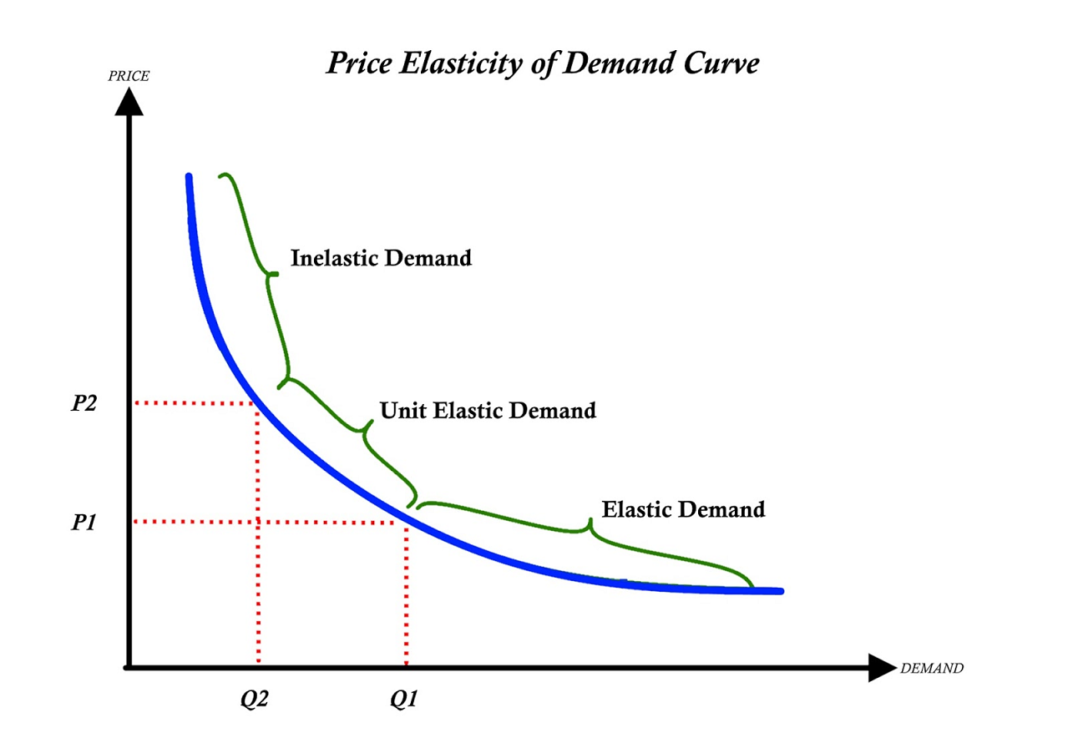Price elasticity of demand is a measure of how much demand for a good or service changes in relation to price changes. In other words, it measures how responsive consumers are to price changes. There are several factors that can affect price elasticity of demand, such as the availability of substitutes, the necessity of the good or service, and the amount of time consumers have to adjust to the price change.

Elasticity is important to businesses because it helps them understand how changes in prices will affect demand for their products or services. It can also help businesses predict how much revenue they can generate from price increases or decreases. In this blog post, we will explore what price elasticity of demand is, how it is measured, and some of the factors that can affect it.
What is Price Elasticity of Demand?
Price elasticity of demand is a measure of how much the quantity demanded of a good or service changes in response to a change in price. It is calculated as the percentage change in quantity demanded divided by the percentage change in price. A good or service with a high price elasticity of demand is said to be “elastic,” while a good or service with a low price elasticity of demand is said to be “inelastic.”
There are several factors that can affect the price elasticity of demand for a good or service, including the availability of substitutes, the necessity of the good or service, and the amount of time consumers have to adjust to a price change.
For example, goods or services that have many close substitutes tend to have more elastic demand, because consumers can easily switch to another product if the price goes up.
On the other hand, goods or services that are necessary and have few substitutes tend to have inelastic demand, because consumers don’t have many other options if the price goes up.
Elasticity also varies over time. For example, when gas prices increase, people may not be able to immediately switch to alternatives like public transportation or walking, so their demand for gas may be relatively inelastic in the short run.
However, over time they may find ways to reduce their gas consumption (by carpooling, for instance), so their long-run demand for gas may be more elastic.
The Different Types of Price Elasticity of Demand
There are four different types of price elasticity of demand – elastic, inelastic, unresponsive, and perfectly elastic.
- Elastic: A good is considered to be elastic if a small change in price results in a large change in demand. In other words, people are very sensitive to price changes and will alter their buying habits accordingly. This is often the case with luxury items or items that have many close substitutes.
- Inelastic: A good is considered to be inelastic if a small change in price has little effect on demand. In other words, people are not very sensitive to price changes and will continue to buy the same quantity regardless of any price increase or decrease. This is often the case with necessities or items with few substitutes.
- Unresponsive: A good is considered unresponsive if there is no change in demand regardless of the price changes. This can happen when people feel they have no choice but to purchase an item (such as gasoline) or when an item has no close substitutes (such as diamonds).
- Perfectly Elastic: Perfectly elastic demand occurs when even a small change in price results in a complete loss of demand for the good. This is extremely rare and only happens in cases where there are an infinite number of substitutes for the good being sold (such as tap water).
How to Measure Price Elasticity of Demand
There are numerous ways to measure price elasticity of demand, but the most common and reliable method is the percentage change in quantity demanded in response to a one percent change in price (percentage change in quantity demanded/percentage change in price).
To calculate this, simply take the difference in quantity demanded at two different prices and divide by the difference in prices.
For example, let’s say you’re trying to measure the price elasticity of demand for apples. quantity demanded of apples decreases from 100 pounds at $2 per pound to 80 pounds at $4 per pound.
This means that the percentage change in quantity demanded is -20% (80-100/100). The percentage change in price is 100% (4-2/2). Therefore, the price elasticity of demand for apples is -20% (percentage change in quantity demanded/percentage change in price).
Also Read: How to Transfer Shares from One Demat Account to Another?

